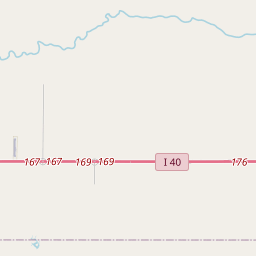First Baptist Church of Shamrock
Historical marker location:






Organized in 1904 by the Rev. E. A. Oller, this was the second church established in Shamrock. Charter members included Martha Anderson, A. N. Holmes, Mrs. Kaffir, Mrs. Betty McGreggor, and J. M. Woodley. First meeting place was the local schoolhouse. In 1906, the congregation called its first regular pastor, the Rev. J. W. Slaton, and bought property for building at Sixth and Wall. The Sunday School was started and church structure completed in 1907. In 1922 membership reached 248. On March 13 of that year, the original church building was struck by lightning and burned to the ground. After using a theater and the Methodist building, the Baptists bought this Main Street site, put up a temporary tabernacle, and completed a new church in 1926. A parsonage was built on the lot at Sixth and Wall. A third sanctuary was erected and dedicated in1973. Pastors succeeding the Rev. J. W. Slaton have been the Revs. H. G. Finley, R. F. Hamilton, H. A. Goodwin, H. C. Slaughter, J. Wood Arnspiger, James E. McClurkin, John R. Rice, C. A. Baxter, E. T. Smith, Vernie Pipes, E. C. Derr (two calls), Clifton Tennison, James O. Todd, J. Ed Byers, Meredith Wyatt, Jimmy Wilson, James Coffman, Murle Rogers, and Jim Scott. (1977)
As one of the most visible programs of the Texas Historical Commission (THC), historical markers commemorate diverse topics in Texas history, including: the history and architecture of houses, commercial and public buildings, religious congregations, and military sites; events that changed the course of local and state history; and individuals who have made lasting contributions to the state, community organizations, and businesses.
The first domed stadium in the world, the Astrodome, was built in Houston in 1965 and hosted numerous sporting events and concerts over the years.
The county's formal establishment occurred in 1876, when it was carved out of Bexar County and named after Royal T. Wheeler, a chief justice of the Texas Supreme Court. During the late 19th century, Wheeler County experienced rapid growth as settlers migrated to the area to take advantage of the Homestead Act, which offered land grants to individuals and families. Cattle ranching became a prominent industry, and the county's economy thrived.
In the early 20th century, the discovery of oil in the nearby Panhandle fields brought a new wave of prosperity to Wheeler County. Oil wells were drilled, and the county experienced an economic boom, attracting both workers and investors. However, this period of prosperity was followed by the Great Depression, which led to a decline in economic activity and population.
In recent years, Wheeler County has focused on preserving its historical heritage and natural beauty. The county offers visitors opportunities for outdoor recreation, including hunting, fishing, and camping. Additionally, museums and historical sites in the area showcase the county's fascinating past, allowing residents and visitors to appreciate the rich history of Wheeler County, Texas.
Wheeler County Timeline
This timeline provides a condensed summary of the historical journey of Wheeler County, Texas.
- 1876 - Wheeler County is officially established on August 21, 1876
- 1880 - The town of Mobeetie becomes the first county seat
- 1881 - Wheeler City is founded and becomes the new county seat
- 1886 - The first courthouse in Wheeler City is built
- 1900 - A new brick courthouse is constructed in Wheeler City
- 1930 - The discovery of oil leads to a boom in Wheeler County
- 1950 - A new courthouse is built in Wheeler to accommodate the growing population
- 1960 - The population of Wheeler County reaches its peak at over 10,000 residents
- 1986 - A tornado devastates parts of Wheeler County, causing widespread destruction
- 2000 - The population of Wheeler County decreases to around 5,000 residents
- 2010 - Wheeler County celebrates its 134th anniversary